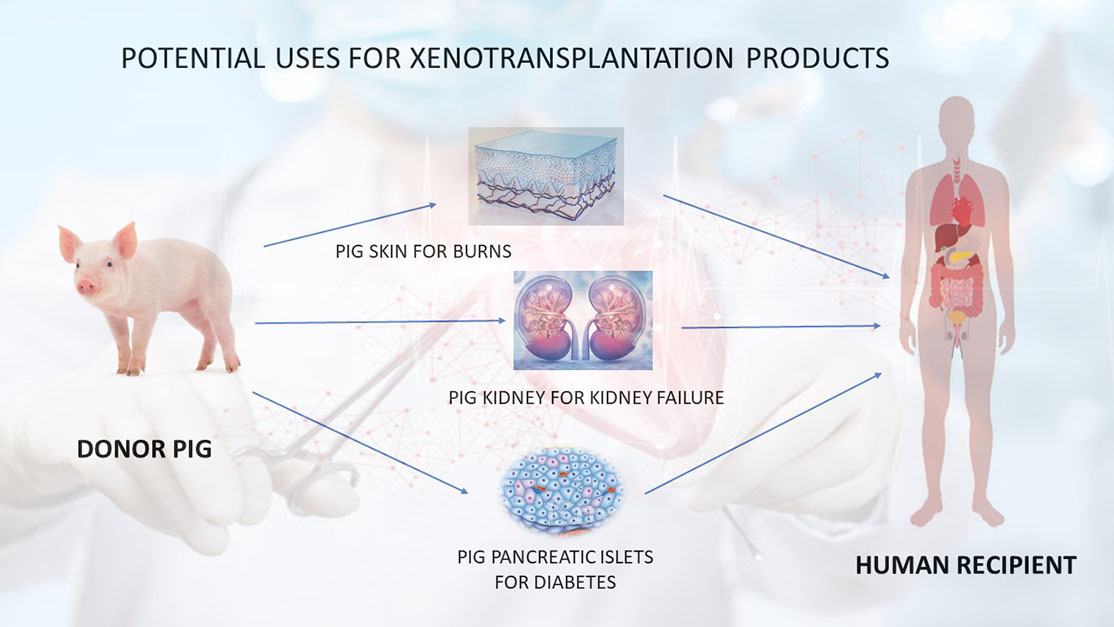
“It just looked like any transplant I’ve ever done from a living donor. A lot of kidneys from deceased people don’t work right away, and take days or weeks to start. This worked immediately.”
Dr. Montgomery, director of the N.Y.U. Langone Transplant Institute in Manhattan.
:no_upscale()/cdn.vox-cdn.com/uploads/chorus_image/image/70056327/kidney_cropped.0.jpg)
Currently, more than 100,000 Americans are on the waiting list for a transplant, with more than 90,000 only needing a kidney. 12 people on this waiting list die each day.
Researchers have been studying to grow human organs in pigs to create perfectly suitable tools for transplantation into humans. So far, pig hearts and kidneys have been successfully transplanted into baboons and monkeys but never in humans.
In 2021, an incredible surgery was performed in N.Y.U. Langone Health. The aim was to “simulate” an actual transplant procedure to prove that a genetically engineered pig’s kidney is able to avoid rejection by a human’s body. This specific kidney was obtained by knocking out a gene that encodes a sugar able to elicit an aggressive human rejection response. This was done because rejection occurs very often in the so-called “xenotransplants”: transplants from animals like pigs and primates to human beings.

A pig’s kidney was attached to blood vessels in a brain-dead patient’s upper leg, outside the abdomen. Then, the surgeons covered it with a protective shield in order to allow constant observation. Kidney’s function was measured by taking samples over the following 54 hours study period. It was the first operation of this kind ever in human history.
Results are astonishing: the kidney was working normally “almost immediately” by starting to make urine and the waste product creatinine. Importantly, there were no signs of rejection.
Video showing the successful transplant on local news
Reactions among the transplantation experts
According to the experts, this is a very good sign as an organ functioning outside the body is a strong indication that it will work inside the body. While some surgeons speculated that this practice will become ordinary in the next few years, others argue that still much more work is needed. Anyway, all transplantation experts acknowledged the importance of this mind blowing surgery. Among them, reactions ranged from extremely optimistic to very careful and warning.
“This is really cutting-edge translational surgery and transplantation that is on the brink of being able to do it in living human beings”
Dr. Amy Friedman, former transplant surgeon and chief medical officer of LiveOnNY
However, this looks too good to be true …
Testing experimental kidneys in humans has presented several daunting concerns:
- We still do not have studies and answers about long-term consequences of such an operation
- Animal welfare and exploitation, as thousands of pigs will be raised with the unique aim of getting their organs harvested for a “better” human receiver
- Pigs can get affected by some viruses which do not affect humans. Can then humans develop these viruses or are they protected?
- Last but not least, we need to make sure that the person fully consents to the practice, knowing all the benefits and risks. In this specific experiment, the family gave the consent and the person themselves, as they were brain-dead. How could this work in practice in the future?
This opens the door for using genetically engineered pigs as a sustainable renewable source of organs for severely ill patients, as the current clinical need is still unmet. However, this procedure will not be available to any patient any time soon due to many relevant medical and regulatory hurdles that still need to be overcome.
In the future, not only kidneys, but also other organs could be transplanted, including hearts, lungs, livers … potentially every organ in our body also present in the pig! All these organs could save the life of thousands of people who die everyday waiting for a suitable human donor, as there is scarcity of human organs. For instance, most dialysis patients do not qualify for transplants, which are reserved for those more likely to survive after the procedure.

Final considerations
At the end of a university lecture, the professor briefly quoted a recent research which tried to create a complete human organ into a pig by combining human iPSCs (Induced Pluripotent Stem Cells) with a pig embryo. The experiment actually failed, as there were pig cells stained in the human-like organ. However, this sparked my curiosity to find out more about xenotransplantation between pigs and humans to see if there have been more recent successful experiments.
One shocking aspect I discovered while writing this post is that an organ is able to properly function without even being “internally” transplanted but simply being linked with blood vessels to the natural functioning organ. I had never thought this was possible, nor had I never read about a similar experience.
My expectation was to discover that someone was at least being transplanted with a very small and simple organ from a pig. Although the surgery is not an actual “transplantation”, it clearly represents a sea change for the organ transplant’s knowledge. Through this research, I have challenged my previous viewpoint about scientific research because I learned that progress sometimes requires “intermediate” steps to achieve the final goal. In the future, I will positively approach all research and experiments, although these don’t necessarily meet my initial expectations.
What about you, would you ever receive a organ from a pig, or a primate?
Reference
“The New York Times”, article written by Roni Caryn Rabin on October 19, 2021